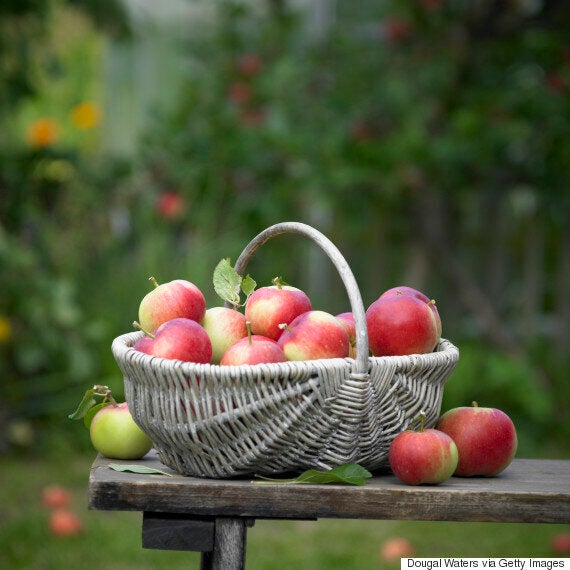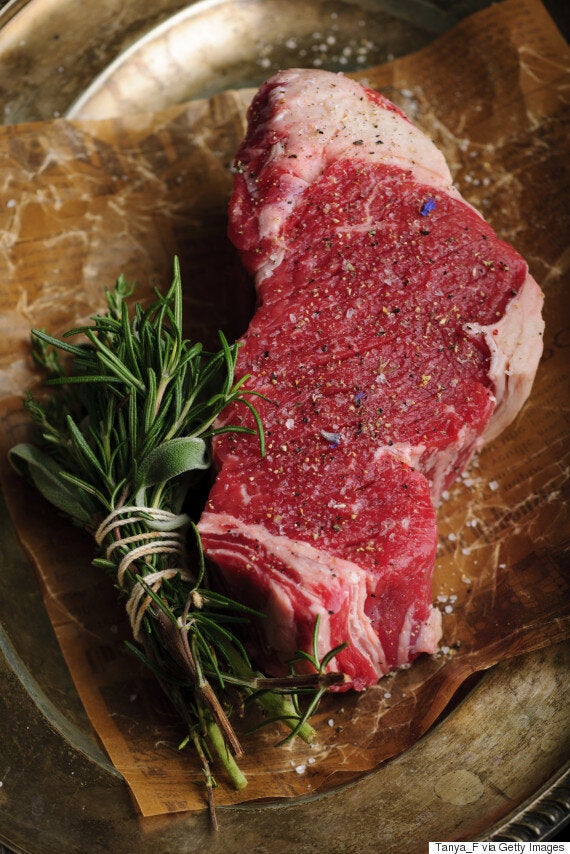
Around one in four adults in Britain is obese - at 17 stone, David Hack used to be one of them.
In search for the true reason behind his obesity, he enrolled at university to study biological sciences, where he studied human evolution and the diet of our earliest ancestors.
He discovered how people are "supposed to eat" and decided our modern lifestyle was to blame for his weight problem.
After just six months of following the programme himself, the 56-year-old now weighs 14.5 stone.
With his newfound knowledge, Hack created The Back To Basics Diet and wrote a book with the same title all about it.
Throughout the book, he talks about the need to eat a predominantly vegetarian diet, only eating real food, carbohydrate density, plus the dangers of processed foods and sugar.
The following extract runs through the foods that are recommended on the diet plan.
Good carbs – fruit and vegetables
Many of us have a dislike of vegetables, often going back to experiences in childhood. Nevertheless, if we want to lose weight effectively and become healthy, we have to face our demons and make eating some fruit and lots of vegetables the central part of each and every meal. [...]
We know that our evolutionary history has designed us to function at our best on a predominantly vegetarian diet, but what does this mean in reality? Should we just have an extra Brussels sprout at Christmas? Do we have to eat the token salad atop our takeaway burger and fries? Sorry, not even close.
I used this phrase earlier in the book: ‘We are eating in a way that is completely out of kilter with our evolutionary design’. Well, the simplest way to redress our ‘out of kilter’ diet is to replace all of the processed carbohydrate with fruit and lots of salad and vegetables.
Because of the idea of carbohydrate density, this type of real plant food is actually low-carb, and is naturally low in calories but very high in nutrients (i.e. quite unlike processed carbohydrate).
By eating lots of real plant foods, we can reverse the damage of a lifetime, start to lose weight effortlessly and painlessly, and boost our health and happiness all in one fell swoop.

Fruit
In his book Fit for Life, Sir Ranulph Fiennes states, “Fruit is truly the panacea to good health.” He’s right and fresh fruit will certainly form a very important part of our new, healthy diet in the future.
However, certain fruits are very high in sugar (fructose, mostly), so we just need to be a little careful about how much fruit we eat in the early stages of our new, real food diet, particularly if we are diabetic or pre-diabetic – medical conditions that should be checked for you by your doctor.
So, I recommend sticking to fruits that are not particularly sweet at first, such as the berries (e.g. raspberries, blueberries, strawberries, loganberries, blackberries, tayberries etc).
However, for most of us, the benefits of eating fruit massively outweigh the risk that a small amount of natural fructose might have on our health.
Nevertheless, if you are diabetic, you might be best advised to avoid fruits altogether until your blood sugar levels are better controlled. As always, please ask your doctor for specific advice. For the rest of us, lots of fruit will do us the world of good.

Choosing protein on the Back to Basics Diet
It is time to give up all those man-made ready meals and takeaways that made us fat and unhealthy and switch to eating real, natural foods instead. This includes our proteins, such as meat and fish.
You won’t be eating a lot of these foods, as vegetables will make up about 80% of each meal, so you will be saving money on this programme as well. As a result, it is well worth seeking out good quality proteins; today, it is fairly easy to find healthy poultry and fish in the supermarket, local shops or online.
From now on, try and eat these types of foods as your main source of protein (and other nutrients) on the Back to Basics diet:

• Meat – Try and source organic meat as much as possible and only eat meat in limited quantities (i.e. once or twice a week at most). As a happy by-product, eating meat infrequently saves a lot of money! Try organic beef, pork, lamb or better still, wild venison.
• Poultry – Find a good source of local, organic chicken etc. They need not be too expensive and can easily be made to feed a family for two, if not three, meals (more later).
• Fish – Finding high-quality, ethically-sourced fish can be a bit of a minefield, but the situation is definitely improving – at least in the UK. I recommend you eat lots of fish, because so long as we are careful in our choices, fish is a healthy and highly nutritious foodstuff and an excellent source of protein. Certain fish also provide high levels of very beneficial Omega 3 fatty acids.
• Eggs – A natural human food. Source high-quality, free- range organic eggs (or keep your own chickens?) and enjoy a few times each week.
• Dairy – We are only designed to consume one type of dairy product: our mother’s milk. We are not designed to consume the milk of other mammals and, in particular, the milk from cows. I do use a little skimmed milk in some of my fish recipes, but otherwise try and cut down on cow’s milk products as much as possible. Switch to organic goat’s milk, Soya milk etc – some goat’s cheese is fine too, as is a little organic butter now and again. These foods will just enhance the enormous array of wonderfully tasty, nutritious foods that you will be enjoying from now on.

• Legumes – I’m personally not a huge fan of legumes (e.g. lentils, pulses, beans and chickpeas etc) as they play havoc with my insides and I think there are generally better, more natural vegetarian food choices available. Nevertheless, I do eat legumes and with careful preparation, they are an excellent source of all the macronutrients and fibre we need in our diet.
• Nuts and Seeds – Nuts are a good source of healthy macronutrients and would have been a staple of our hunter-gatherer ancestors. Walnuts are a good source of Omega 3 fatty acids and Brazil nuts contain selenium, which is one of our most important micronutrients and often lacking in the modern diet. Sunflower seeds and pumpkin seeds are delicious sprinkled over salads, for instance. Another seed that I love is quinoa, which I eat two or three times a week.
The Back to Basics Diet (published by Matador RRP £9.99 paperback, RRP £5.99 ebook) is available to purchase from online retailer including amazon.co.uk and to order from all good bookstores. For more information please visit thebacktobasicsdiet.com.

